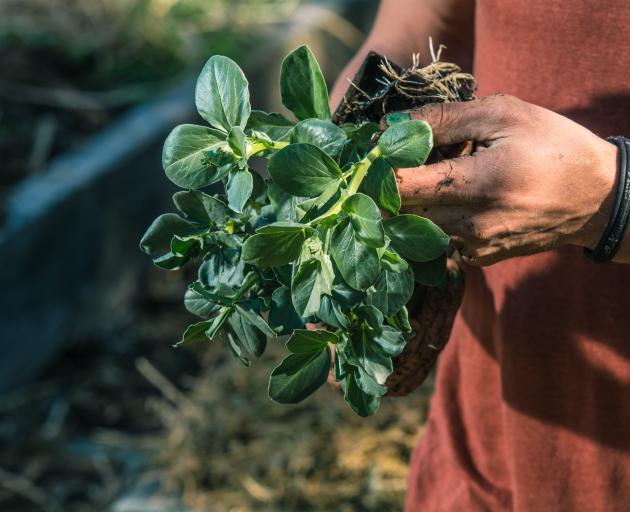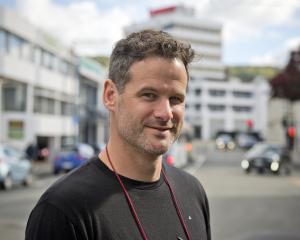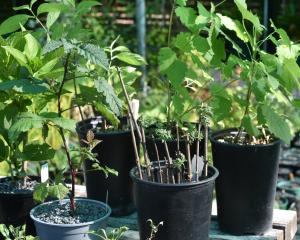
The heritage that is carried in the seeds you choose to plant is well worth considering, writes Ben Elms, a.k.a. Dr Compost.
Farmers markets, heirloom vegetables and fruit trees, wood turning and crochet hats. Everywhere we turn there is a growing movement to embrace what was magical about pre-industrial farming. Whether we like it or not, more and more of the veges we’re buying at the supermarket have barely been touched by human hands. Automated high-tech, computerised, roboticised, food-growing greenhouses are here already.
With them comes the need for plants that will grow supremely well in these sterile, artificial environments. Veges have been bred for attributes that have little to do with flavour, but are all about uniform size, shape and shelf life. But big corp is slowly starting to catch on, and is now trying to grow you flavoursome colourful tomatoes that don’t taste of the cardboard you’ve been getting used to.
You may not see "heirloom" vegetables and fruit for sale in supermarket aisles any time soon, but get along to a wholefood/organic food store or farmers market and you will see more of the vegetables and fruit of yesteryear. It is hard to go past our modern day online encyclopedia Wikipedia for a definition of heirloom fruit and vegetables: An "heirloom vegetable is an old cultivar that is maintained by gardeners and farmers, particularly in isolated or ethnic minority communities of Western countries. These were commonly grown during earlier periods in human history, but are not used in modern large-scale agriculture".
So that sums it up really: varieties that are not grown in modern agriculture. I’d question that a little as there is many an apple eaten in our childhoods that were grown on a commercial scale but have since fallen out of favour and don’t suit big agriculture’s criteria or big business’ need for homogeneity in size, colour, shape, and so on, that are grown in backyards under the "heirloom banner".
Continuing with the humble apple, in the US alone in the 1800s there were thousands of different varieties of apples all adapted to different local growing conditions, ripening at different times and all with different characteristics; from cookers to long storage life, sweet, tart, large and small.

In New Zealand, we have numerous heroes, such as the Guytons down in Riverton who have found and propagated many old varieties of apples once thought lost, from old farms and homesteads, making them available to the public and thus ensuring these apples aren’t lost to future generations. What’s not to get excited about planting and eating apples with names such as "Kentish fillbasket", "Priscilla" and "Captain Kidd"?
I particularly like the definition of "heirloom" that you find in the dictionary: "a valuable object that has belonged to a family for several generations". That sums it up so well for a small nation such as New Zealand. Here, many of our heirloom vegetables are just that, seeds that have been saved year after year by families whose relatives brought the seeds with them, when they migrated from far-flung parts of the globe.
Nostalgia obviously plays a small part of growing Great Grandpa’s seeds, but a plant adapts to a place and its particular climate and its specific growing season over a number of years. It’s exciting to grow vegetables like the "Takamatua Black Bean" or the "Bloody Butcher" tomato. Look a bit deeper and see the history associated with these little seeds and a sense of connection and desire to grow is cemented even further.
In New Zealand, we have been fortunate to have Kay Baxter and the Koanga Institute dedicated to bringing together these New Zealand heirloom seeds from around the country, grown by multiple generations, and making them available to the general public online and in shops. Get online now and you will find — as well as the amazing Koanga Institute — multiple other New Zealand seed growing sites dedicated to supplying New Zealand heirloom vegetable seeds.
As gardeners, there are other ways we can tap into this movement. Consider joining a seed exchange. Members get seeds at a greatly reduced price and are encouraged to save seed and redistribute them among the membership. Great mentoring and advice is available within these communities on the intricacies of saving seeds.
The Southern Seed Exchange, based out of Christchurch, offers a large selection of seeds, great informative and educational quarterly newsletters, annual seed swaps and seed saving workshops to its members. Recently here in Wanaka we had our annual seed swap hosted by Local Food Wanaka, and Queenstown Public Library has just started a drop-in seed swap bank. You will be amazed at the gems that can turn up at these swaps.
Community gardens are another great source of heirloom seeds and general gardening knowledge. They’re full of keen gardeners who love to share their experiences. Now, just because you buy a pack of heirloom seeds doesn’t mean you’re on a path to instant gardening success. Consider your own gardening region and all its intricacies from season to season. We have to remember that the seeds grown in that packet are generally grown somewhere far away, often in the warmer climes of the North island.
Don’t let this put you off though, you can start acclimatising the seeds to your own environment over a number of years, selecting the best performing plants to save seed from.
This can be hard when you want to eat them. I’ve been saving one of my garlic varieties for 17 years now, given to me by somebody else who had been saving it for many years, who was given it by somebody else from outside the district. Continue down this chain and you have a family tree developing over decades, and hundreds of years, of this garlic variety being shared to grow. This variety of garlic is now grown all over the district. Its existence is guaranteed for a long time to come. Every year I grade the garlic by size. Every year I look lustfully at the biggest bulbous bunches that I can’t eat, before saving them to be planted out in the early winter.
- The Dr Compost project is funded by Queenstown Lakes District Council and delivered by Wanaka Wastebusters to reduce organic waste going to landfill.
GIVE IT A GO
Keep an eye out for heritage apple tree grafting workshops run by Central Otago Tree Croppers and Habitate Nursery, in the Dunedin region.
Get along to a local seed swap. You don’t need seeds to swap when going to a seed swap, often a gold coin donation to the event is all that’s required to walk home with your pockets full of exciting varieties of seed. It’s a great event to glean information from experienced gardeners. Not one locally? Consider starting one with a few fellow gardeners.
Try to save at least one seed variety this year. Choose something easy to start with. Corn is in the very enthusiastic monster garden category. It requires 200 plants to be grown to ensure genetic diversity is continued in the seed. So consider a plant less demanding if you’re starting off.
Lettuce, beans or peas are great ones to give a go; they self pollinate easily. Remember, we are looking to save seed from the plants that go to seed last (lettuce) and the plant that looks lusher and healthier than the others. Maybe it’s even more productive than the other plants. Is it more robust, having not been attacked by bugs or disease.
It’s easy to get carried away with unusual plants. In my house, we plant what we like to eat first, then the staples, then comes vegetables we haven’t tried before. To get children excited, try growing something they want to grow. This year my son is growing chillies and watermelons. I hope it’s a hot summer!
Free Dr Compost workshops this spring
Growing veges: getting started with raised beds and improving your harvest. How to grow and transplant seedlings, how to build a raised bed and top crops to grow.
• Wanaka: Wednesday, November 1, 6-8pm at St John rooms, 4 Link Way.
• Queenstown: Thursday, November 2, 6-8pm at Shotover Garden Centre, 150 Ladies Mile-Frankton Highway (SH6).
Easy ways to compost: traditional "cold" composting, Bokashi buckets and worm farms. Feed your soil by harnessing the power of fermentation, bacteria and worms. Find a method to suit you, no smell, no fuss.
• Wanaka: Wednesday, November 8, 6-8pm at St John rooms, 4 Link Way.
• Queenstown: Thursday, November 9, 6-8pm at Shotover Garden Centre, 150 Ladies Mile-Frankton Highway (SH6).











